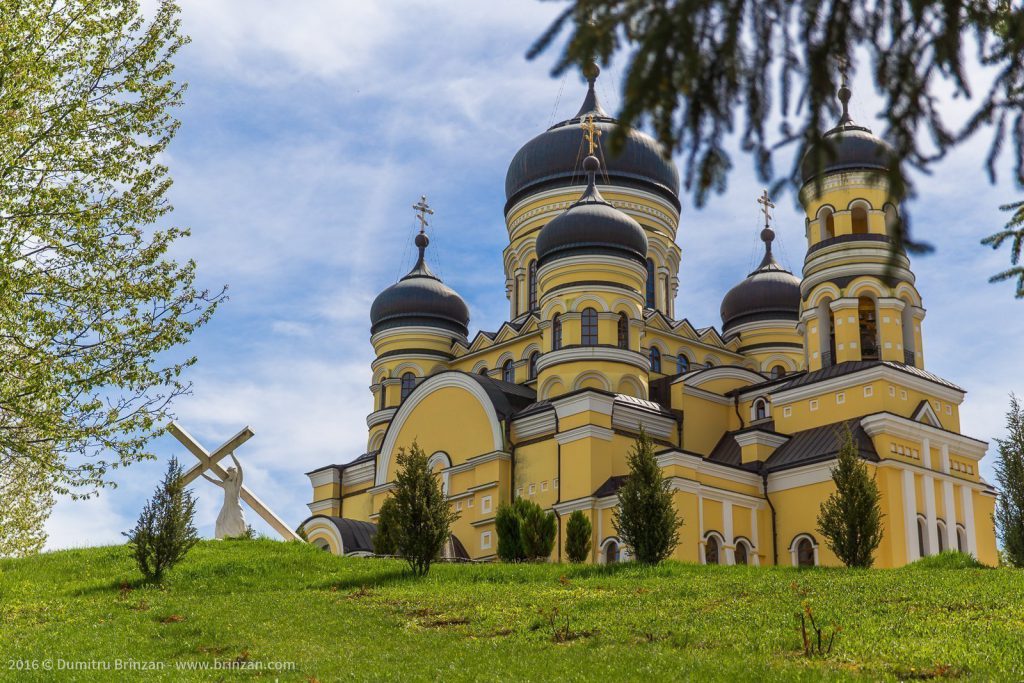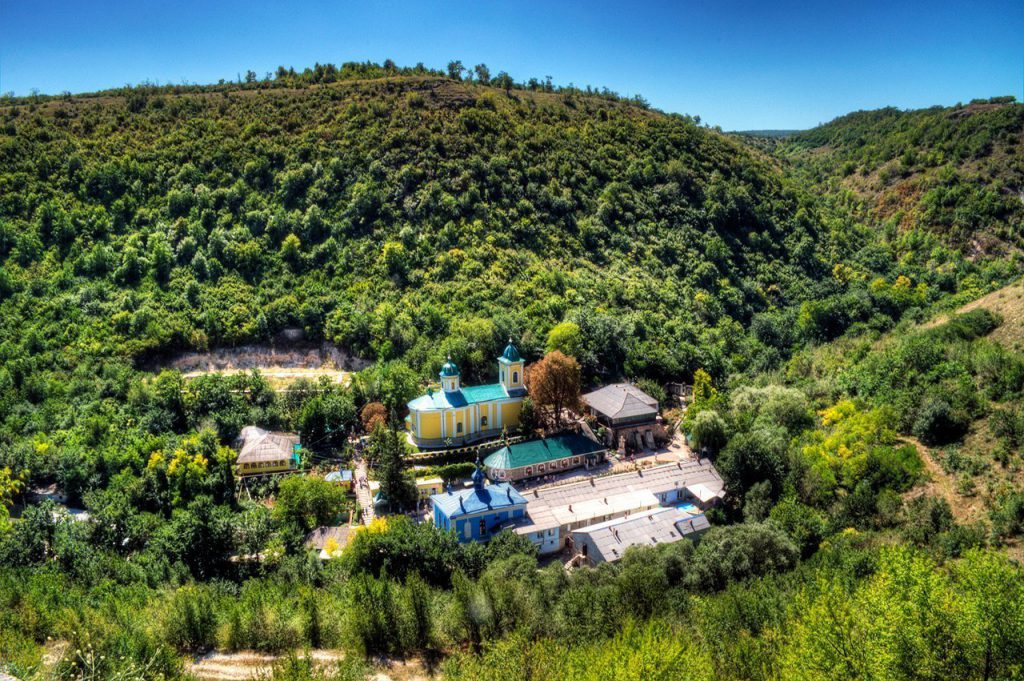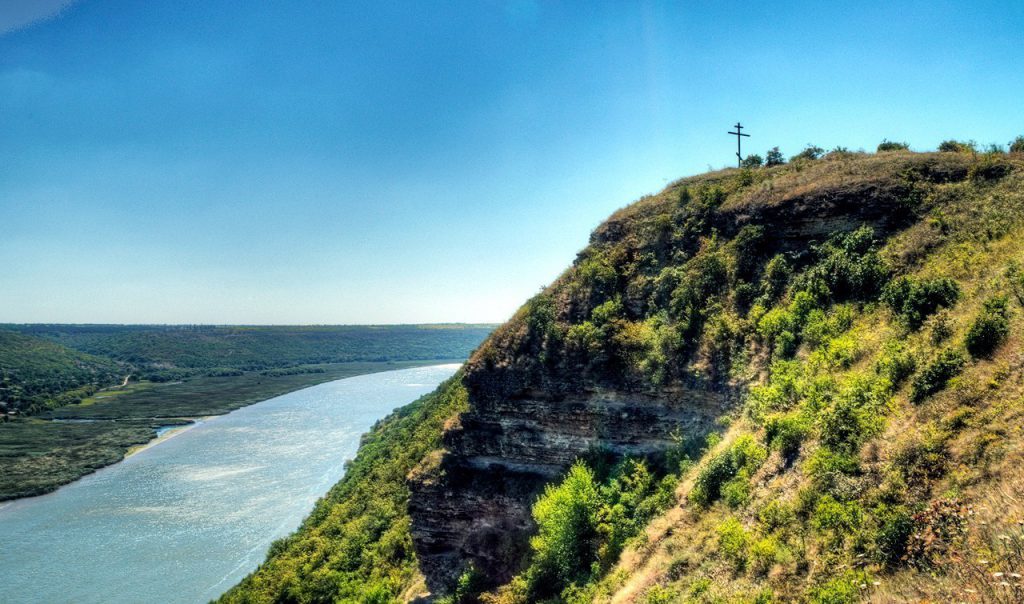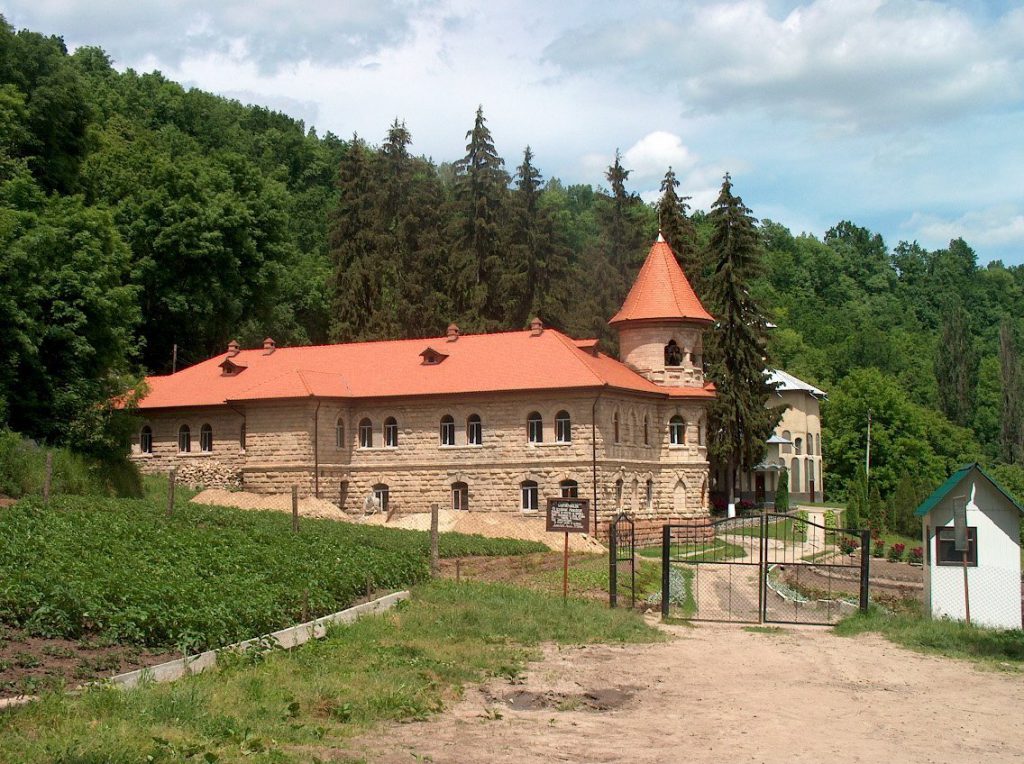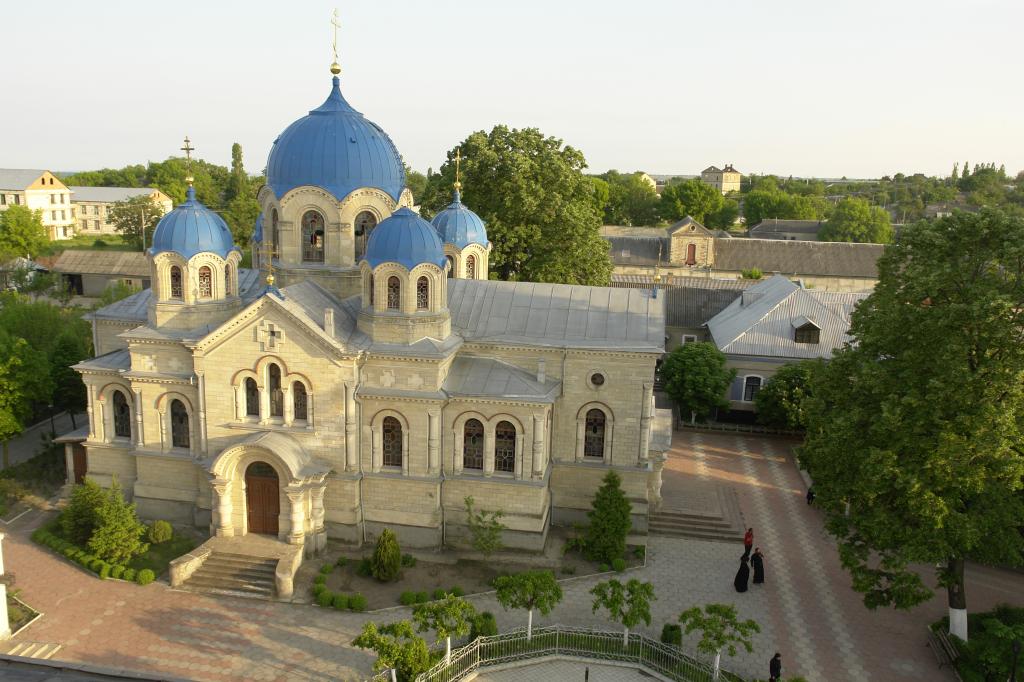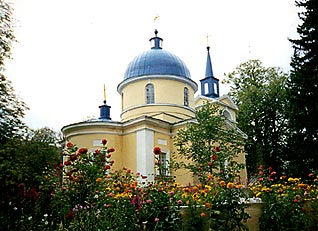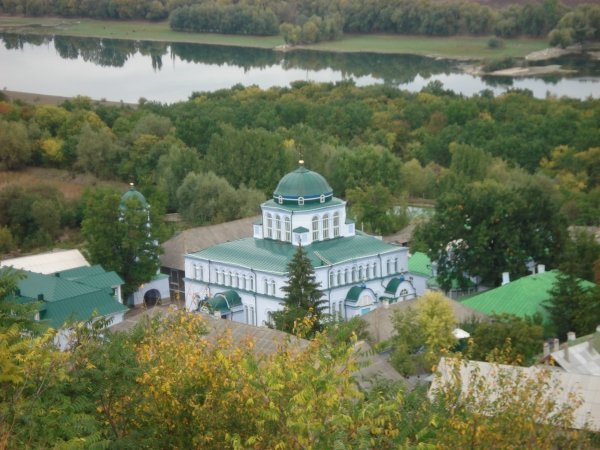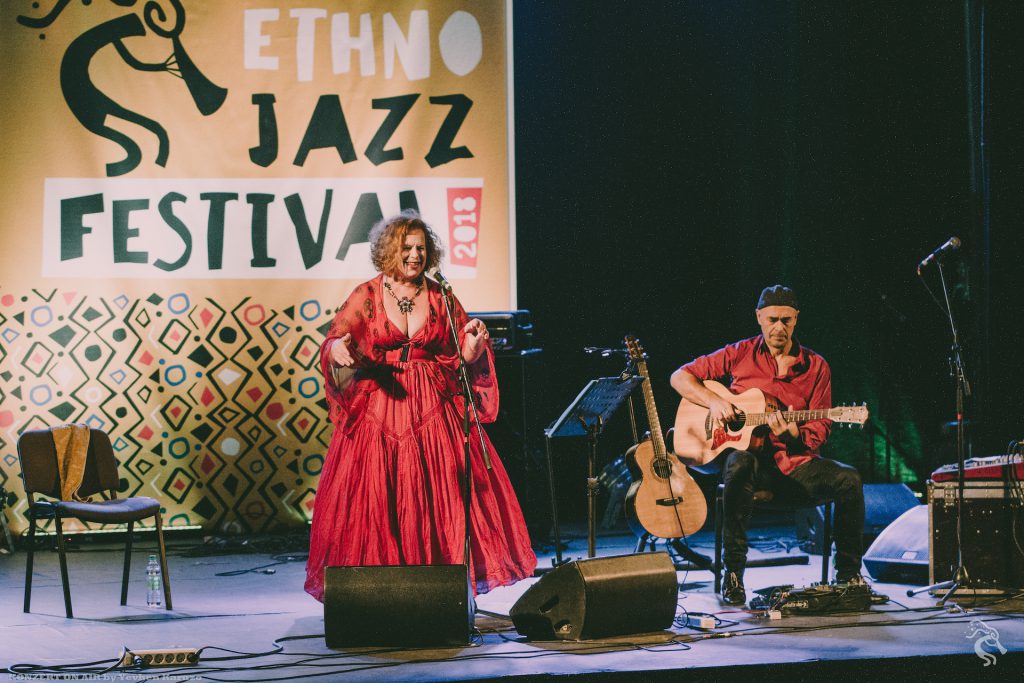If cultural travel and learning about history, traditions and folklore is of interest to you, then you’ll love visiting Moldova. Our country is an interesting combination of cultures – Moldovan, Romanian, Russian, Ukrainian, Greek, Tatar, Turkish and others. The cultural mix stems from Moldova being a crossroads of other civilizations, particularly Romanian, Russian and Ottoman. Over the centuries a number of different civilizations and peoples have conquered or settled in our land, each contributing to the Moldovan culture and traditions you see today.
Cultural Attractions
Different ethnic groups still make up a substantial percentage of Moldova’s population today in certain parts of our country. As you travel around Moldova you will also get a glimpse into the culture of Russians, Romanians, Bulgarians, Ukrainians, Gagauzians and Roma, just to name a few. For example, in southern Moldova you’ll find the autonomous region of Gagauzia with its strong Gagauzian culture and traditions.
As Moldova was part of the Soviet Union, you will still find many monuments and other reminders of Soviet times, including statues of Vladimir Lenin, the father of communism. Moldova’s Transnistria region is a little-changed repository of what life was like in the U.S.S.R. This may not last forever, however, so it would be wise for you to include Transnistria on your itinerary when you visit Moldova.
You can also soak up culture in Moldova by visiting one of the many monasteries throughout the country. The lives of monks and nuns resemble what they were centuries ago, providing a contrast to the fast pace of modern life today. Some of the most interesting monasteries you can visit in Moldova are the cave monasteries at Orheiul Vechi.
In addition to learning about Moldovan customs and culture from observing people’s traditions and behaviors, you can learn about it from their crafts and art. When you visit Moldova, you will see how traditional costumes called Ia are created, how carpets are hand woven on looms and how clay pots and different types of pottery are made. Moldovan handicraft centers include Clișova Nouă, Hogineşti and Călărași, but you will find many more ateliers and artisans in the Moldovan countryside. You can learn even more about the cultural legacy of Moldova on this page dedicated to Moldovan cultural heritage.
This Moldova culture guide will introduce you to some of the main cultural sites in Moldova, including its theatres, performance halls, museums, and churches in Chisinau, as well as all the Moldovan monasteries throughout the country. We’ve also provided an interactive map with all the details and locations of all of these cultural sites in Moldova. And finally, we list all the upcoming Moldovan cultural festivals and events as taking part in one is not only a lot of fun, but it is also one of the best ways to immerse yourself in Moldovan culture and traditions.
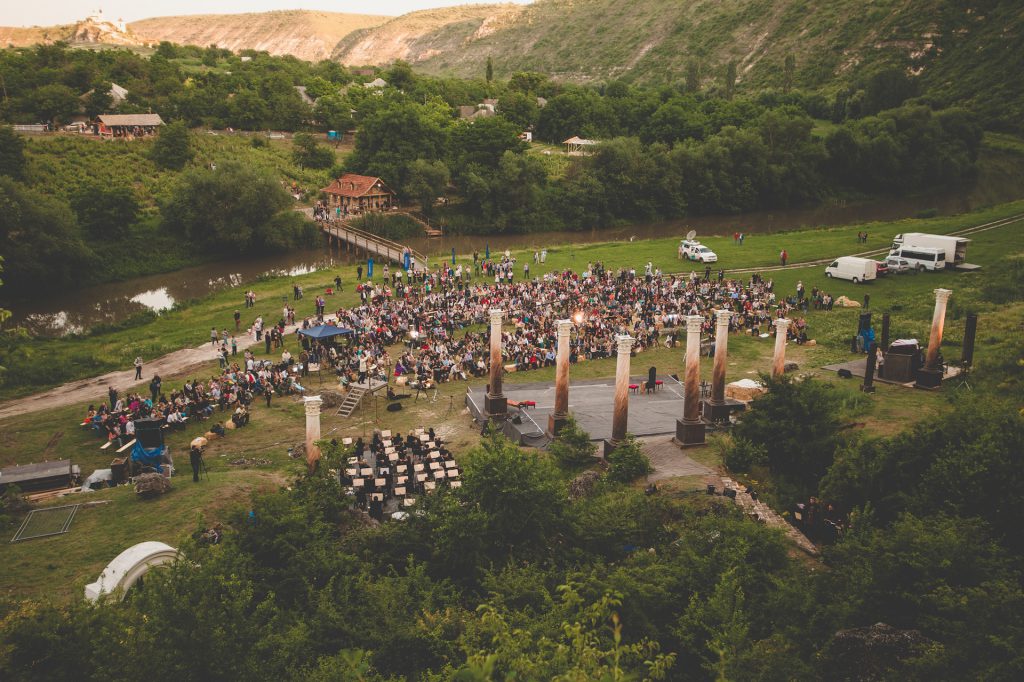
A.P Cehov Theatre
75 Vlaicu Pircalab street, ChisinauThe Russian Drama Theatre located at the very center of the city.
Eugen Ionesco Theatre
11 Grigore Vieru avenue, ChisinauThe theater with a different kind of theatrical language and with a new acting style. Watching one performance is enough to never mistake this theater with others.
National Opera and Ballet Theatre
152 Stefan cel Mare si Sfant avenue, ChisinauThe National Opera and Ballet Theater Maria Bieșu is one of the largest opera and ballet theaters in Eastern Europe.
Mihai Eminescu National Theatre
79 Stefan cel Mare si Sfant avenue, ChisinauThe National Theater Mihai Eminescu is one of the most important theater stages in the country, founded in 1921.
Geneza Art Theatre
109/1 Alexei Mateevici street, ChisinauAn independent theater, dedicated to all ages, where the actors are trying to remove stereotypes from theatrical arts, focusing their work on bold theatrical experiments. If you want to see a play on the stage of the most popular and trendy theater in Chișinău, make sure you book your ticket well in advance.
Performance halls
See locations on the map
Nicolae Sulac National Palace
21 Pushkin street, ChisinauThe largest concert hall in Moldova. If you want to diversify your Chișinău visit agenda, check what’s on at the National Palace.
Organ Hall
81 Stefan cel Mare si Sfant avenue, ChisinauHosted by one of the most splendid buildings of Chișinău, the Organ Hall is a promoter of the universal and national classical music. Check out the Organ Hall’s schedule, while visiting Chisinau, as you will definitely find something worth to book a ticket for.
Sergei Lunchevici National Philharmonic
78 Mitropolit Varlaam street, ChisinauThe most important concert organization in Moldova, featuring a wide range of music activities, from classical and jazz to folk and popular music. The building was recently renovated and beautifully decorates the heart of Chișinău. When you visit it, remember, this building once hosted the National Bank of Moldova.
Republic Palace
16 Maria Cebotari street, ChisinauFeaturing a unique value, thanks to its retro architectural style with classical elements, the building of the Palace of the Republic is on the list of the most sumptuous buildings in the world. The Palace hall hosts the country’s largest indoor events.
Museums
See locations on the map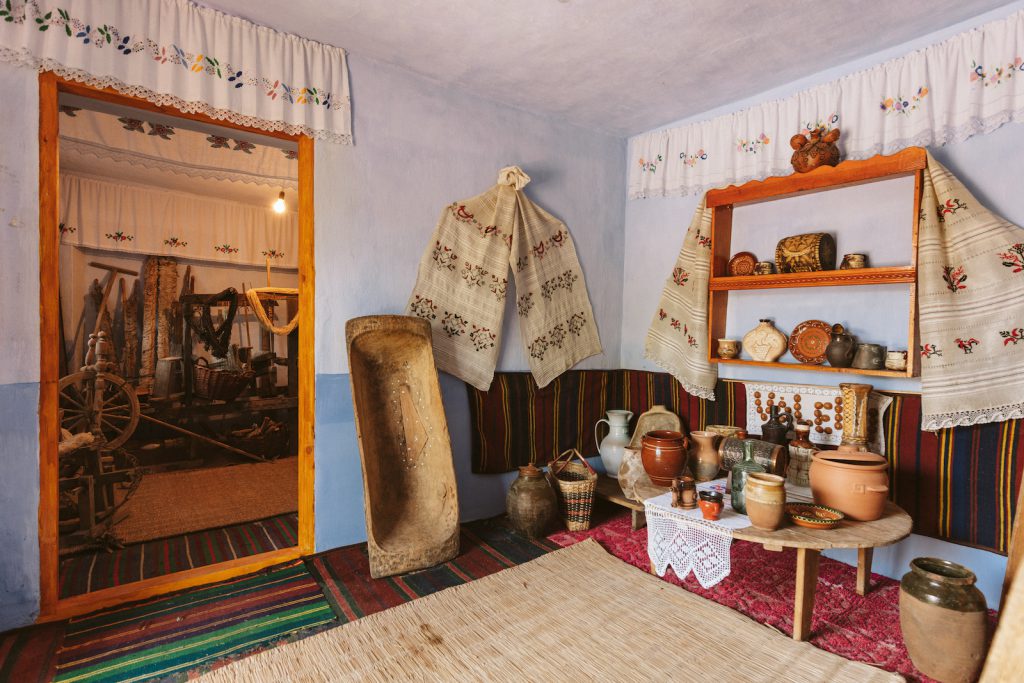
Moldova National Museum of History
121a 31 August 1989 street, ChisinauThis is one of the most important museum institutions in the country thanks to its particularly rich heritage, along with its scientific prestige. You may be surprised by the diorama displaying in miniature war scenes from the Iași-Chișinău Offensive. A 45×11 meter canvas depicts a battle near the village of Leușeni on the Prut River during the summer of 1944. The natural background, which is an integral whole with the canvas, consists of authentic objects: an anti-tank gun, artillery and cartridge boxes, equipment and ammunition. The general surface of the natural background and the pictorial painting of the diorama make up about 800 m.
National Museum of Ethnography and Natural History
80 Mihail Kogalniceanu street, ChisinauThis is the oldest museum in Moldova, and is hosted in a historical, oriental-style building. Apart from the outstanding permanent exhibition, you will also find a small Botanical Garden and a Vivarium in the museum’s backyard.
National Art Museum
115 31 August 1989 street, ChisinauLocated in the very heart of Chișinău, the National Museum of Fine Arts displays art specimens of all the times – from prehistory to the present. The building was recently renovated and is one of the greatest prides of the city. If you fancy a journey into the local art, this museum is the right place to visit.
Pushkin House Museum
19 Anton Pann street, ChisinauThis building hosted the Russian poet and writer Alexander Pushkin during his exile in Bessarabia, between 1920-1923, when Moldova was under the domination of the Russian Empire.
The museum consists of two buildings: the small house, where Pushkin had lived, fitted with period objects, and a building, used as a museum, hosting three rooms reproducing the staying of the poet in Bessarabia. While in Chișinău, Pushkin wrote other important poems as well, including The Gypsies, apparently inspired by a young gypsy woman Zamfira, the poet met during his frequent trips to Dolna, a village located 50 km from the capital.
Military Museum
47 Tighina street, ChisinauThis museum’s exhibitions are intended to present the evolution of military history and art in the Bessarabian space.
Water Tower Town History Museum
60a Alexei Mateevici street, ChisinauThe museum’s building is part of the famous track record of the architecture created by Bernardazzi. Designed initially as a firefighters’ watchtower, it turned later into a place where the history of the city is carefully preserved. The tower balcony opens an overhead view of Moldova’s capital.
L Gallery
67 Bucuresti street, ChisinauArt Gallery and Souvenir and Art Pieces Shop. The gallery is located right in the center of Chișinău, close to the Embassy of Romania.
Constantin Brincusi Exhibition Center
3 Stefan cel Mare si Sfant, ChisinauThe Exhibition Center Constantin Brâncuși represents the Union of Plastic Artists of Moldova and displays the most fundamental works of the artists.
Chisinau churches and monasteries
See locations on the map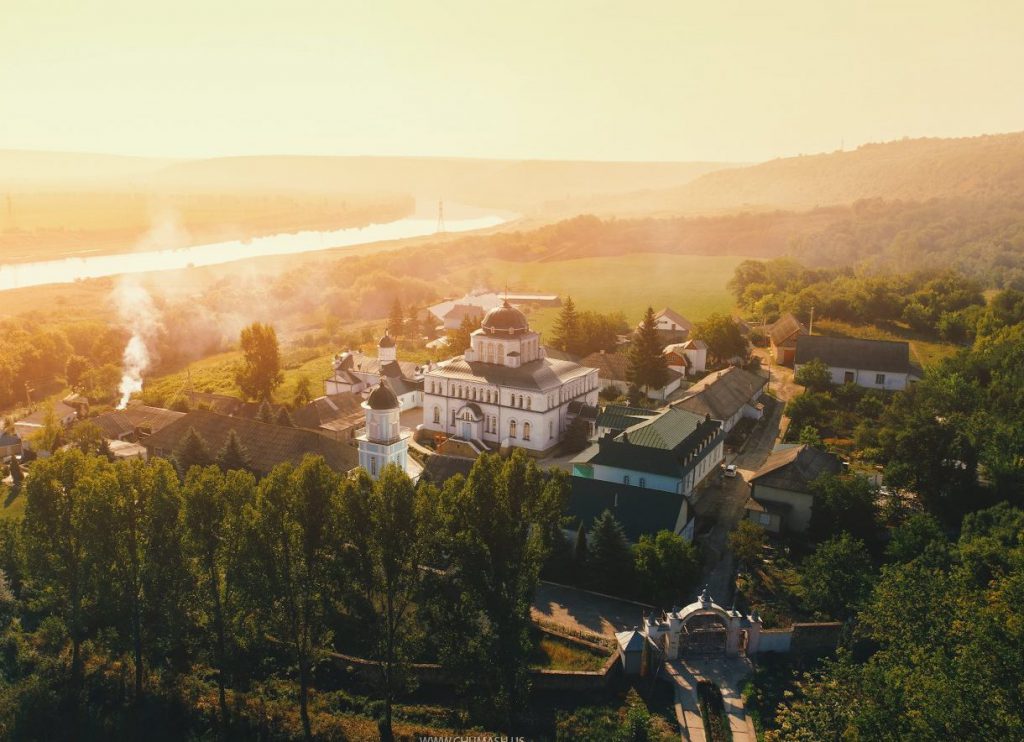
Cathedral of Divine Providence
85 Dosoftei street, ChisinauThe Cathedral of Divine Providence is the spiritual center of the Roman Catholic Diocese of Chișinău.
Cathedral of Christ’s Nativity
12 Great National Assembly Square, ChisinauThis is the main worship building in Moldova and an important architectural monument. The Cathedral is located in the heart of the capital, behind the Triumphal Arch, surrounded by the Central Park of Chișinău.
St. Teodora de la Sihla Church
20a Alexander Puskin street, ChisinauThe St. Teodora de la Sihla Church is a cathedral in Chișinău, providing services both on new and old style. The St. Teodora de la Sihla Church is a cathedral in Chișinău, providing services both on new and old style.
Schimbarea la Fata a Mantuitorului Church
164a Stefan cel Mare si Sfant avenue, ChisinauFormerly the chapel of the Boys Gymnasium No2, the Transfiguration Church is an important architectural and spiritual monument.
Ciuflea Monastery
12 Ciuflea street, ChisinauThe monastery “Holy Great Martyr Teodor Tiron”, well known as Ciuflea Monastery, being a convent of nuns in Chisinau, the monastery is classified as a monument of national architecture, listed in the Registry of history and culture of Chisinau.
Church of St. Nicholas
190 Stefan cel Mare si Sfant avenue, ChisinauWith a construction style inspired from the Russian church architecture, the St. Nicolas Church is the former chapel of the city hospital. Over the years, it turned into an island of faith of the capital.
Assumption of the Virgin Mary Wooden Church
Bulevardul Dacia 54, Chișinău, MoldovaBeautiful, modest and authentic, this church, located in the Botanica Sector, close to the Zoo, is hidden from the traffic and stays out of the public eye. The silence of the edge of town makes it special, while the church services held in the Romanian and Slavonic languages go deep down in your soul.
Mazarache Church
3/5 Mazarachi street, ChisinauThe oldest building in Chișinău is considered to be the Măzărache Church. This institution of worship belongs to the Russian community of Old Believers, but it is also open to all visitors, including during the service, provided the rules are followed.
St. Pantelimon Church
42 Vlaicu Pircalab street, ChisinauBuilt in the Bernardazzi style, the church represents an invaluable spiritual legacy of our nation.
Monuments
See locations on the map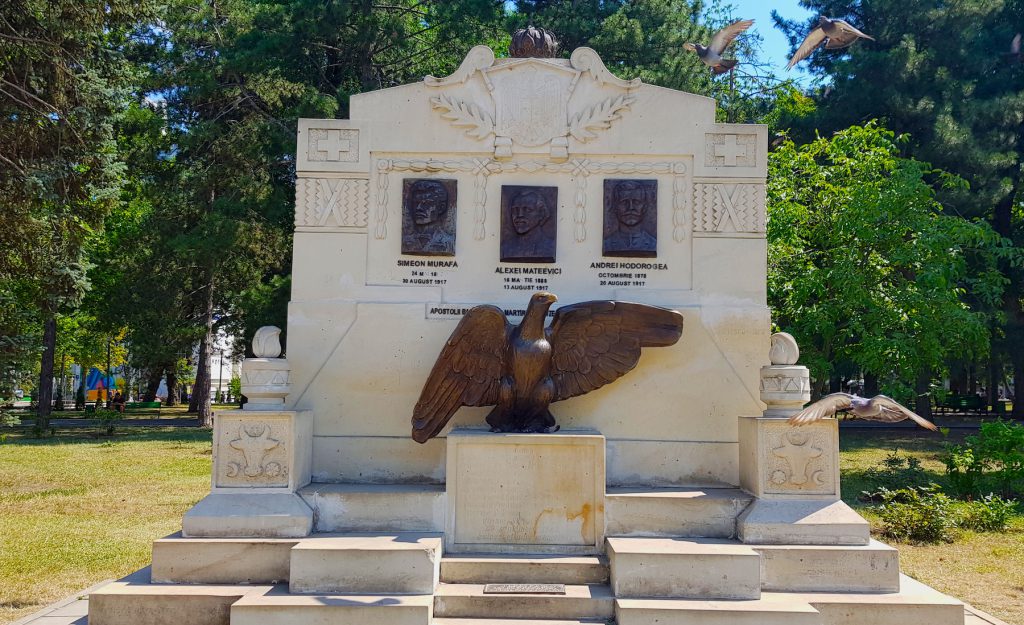
Statue of Stephen the Great
148 Stefan cel Mare si Sfint avenue, ChisinauThe Monument to Ștefan cel Mare (Stephan the Great), located in the center of Chișinău, is the meeting point for lovers, as well as for protesters. The work is a tribute to the most important historical figure of Moldova – Voievod Ștefan cel Mare. The statue was cast in Bucharest, from six big guns, captured by the ottoman during a Russian-Turkish war. Sculptor Alexandru Plămădeala is the author of the statue, opened on April 29, 1928, in Chișinău, on the 10th anniversary of the unification of Bessarabia with Romania.
Arc of Triumph
Great National Assembly Square, ChisinauThis is one of the architectural symbols of Chișinău. The Arch was built in the middle of the 19th century, to commemorate the Russian-Ottoman wars, which also involved the territory of our country. This is the place where the Chișinău residents convene for the most important events of the country.
Classical Alley
Stefan cel Mare Public Garden, ChisinauWould you like to meet Moldova’s most famous writers? Then go to the very heart of Chișinău – the Ștefan cel Mare Park. Here, on the two sides of the central alley, you will find the busts of the most prominent people of our culture. We suggest you to read a few poems by Mihai Eminescu, Dumitru Matcovschi, Grigore Vieru – the most important poets of our culture, before you take a walk in the park.
Eternity Memorial Complex
5 Pantelimon Halippa street, ChisinauOpened to commemorate the painful events Bessarabia went through in the 20th century, the monument is located on the territory of the Heroes Cemetery from the World War Two, and represents a pyramid made up of five bayonets, with the eternal flame burning right in the center of the construction.
Pain Train Monument in Memory of Victims of Stalinist Repression
1 Piata Garii street, ChisinauLocated in the Railway Station Square, this monument was built to commemorate the victims of deportations of the communist regime.
Jewish Ghetto Victims Monument
43 Puskin street, ChisinauDuring the World War Two, a Jewish ghetto was organized in Chișinău, under the administration of the Soviet regime. This is why, you can find in Chișinău a monument in memory of the Jewish, the victims of repression.
Cornerstone of Chisinau
38 Albisoara street, ChisinauThe stone block of Chișinău is located in close proximity to the Măzărache Church – it is believed to be the place Chisinau began to exist.
Monasteries of Moldova
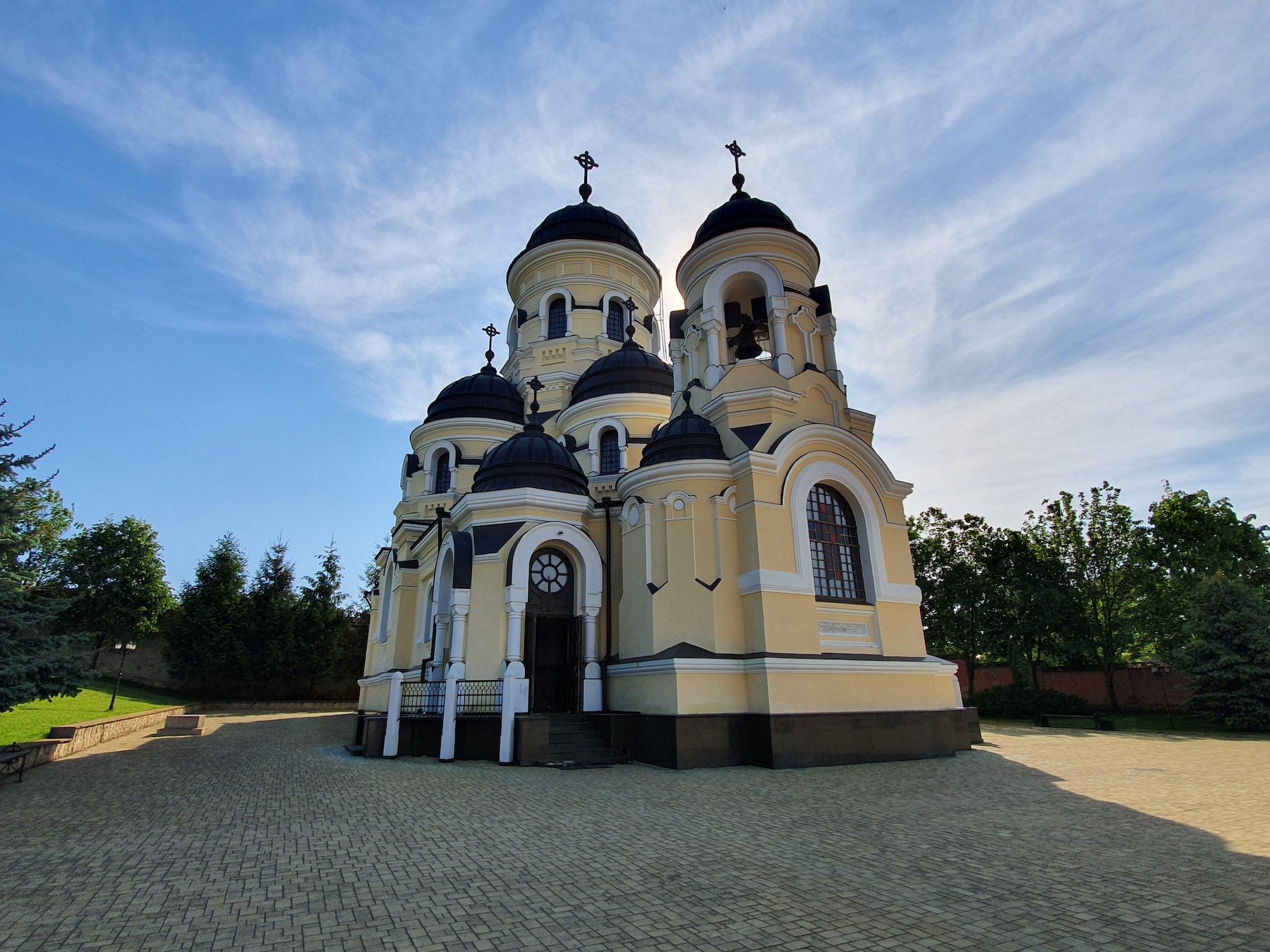
Capriana Monastery
One of the oldest monasteries in Moldova, Capriana rises in the very center of the Codri region. The first written mention of the complex was in a royal decree in 1429 under which King Alexandru cel Bun presented the monastery to his wife, Princess Marena. Another symbol of the monastery’s royal pedigree is a tree known as King Stefan cel Mare’s Oak. The original monastery was built of wood. In later centuries, stone was used to create three churches – the Assumption of the Virgin Mary, Sfintul Gheorghe and Sfintul Nicolae. During medieval times the Capriana Monastery was home to Moldova’s largest library. Gifts from royalty were part of the collection, which still exists today. Gavriil Banulescu-Bodoni, the renowned metropolitan of Moldova, Kiev and Bessarabia, is buried on the monastery’s grounds.
- Distance from Chisinau: 40 km
- Visiting hours: Monday – Sunday, 6 a.m. – 8 p.m.
- Type: Monastery for monks
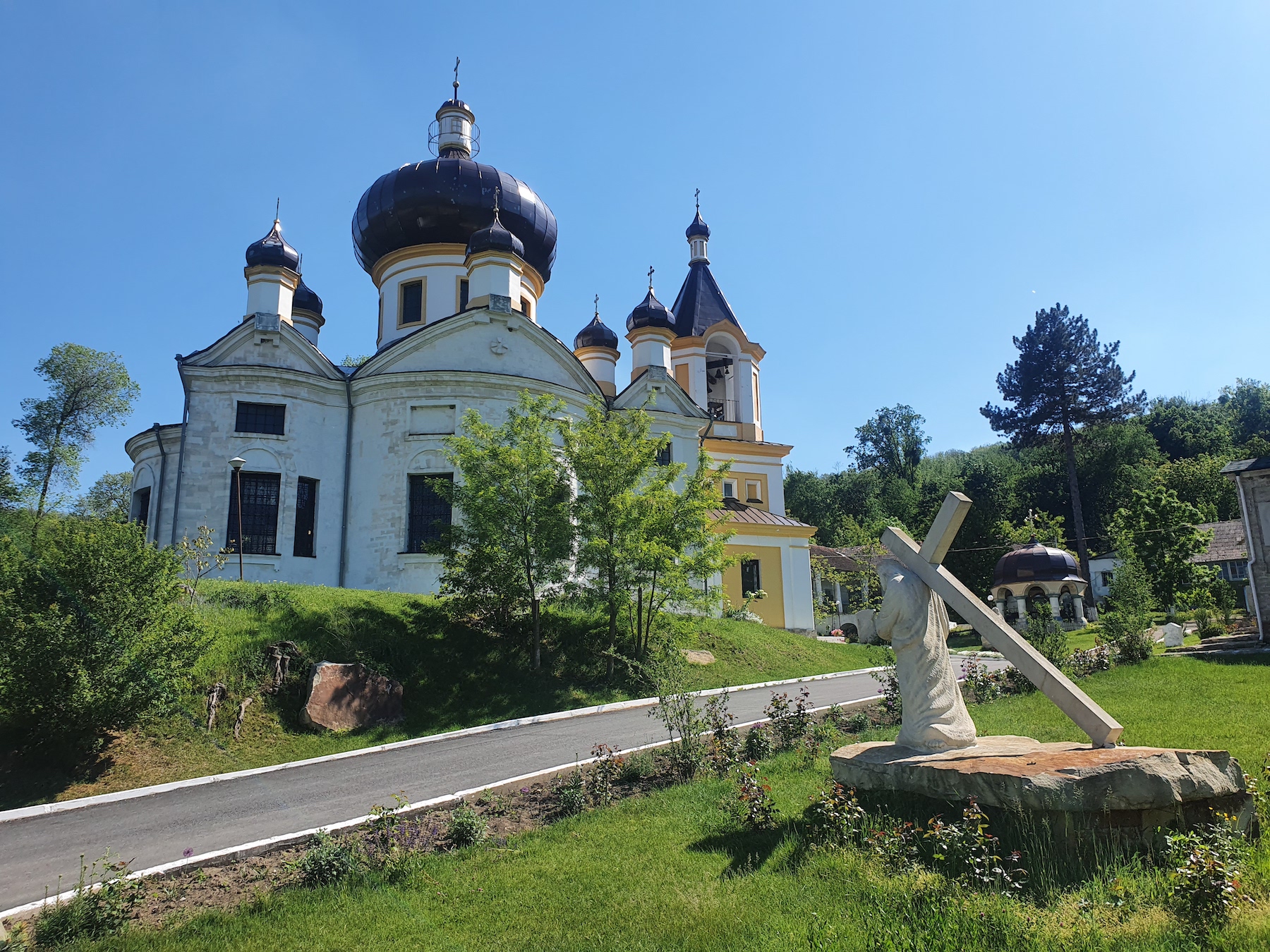
Condrita Monastery
The Condrita Monastery has some features of a fortress, such as walls 1 ½ meters – or five feet – thick. Visitors are amazed to discover that the paint on its ceilings is the original that workers applied in the 19th Century. The complex’s churches were built as the 29th Century was about to begin. The monastery has endured waves of political and military turmoil. One the worst periods was the Soviet era, when authorities destroyed much of the complex to transform it into a camp for young Communists. Legend has it that a number of strange, unexplained events have occurred at the monastery. One tale involves the Soviets putting up a building over graves in the cemetery. When it was demolished after the Soviet Union’s break-up, the story goes, graves that had been maligned during the building’s construction, mysteriously realigned themselves.
- Distance from Chisinau: 25 km
- Visiting hours: Monday – Sunday, 7 a.m. – 9 p.m.
- Type: Monastery for monks
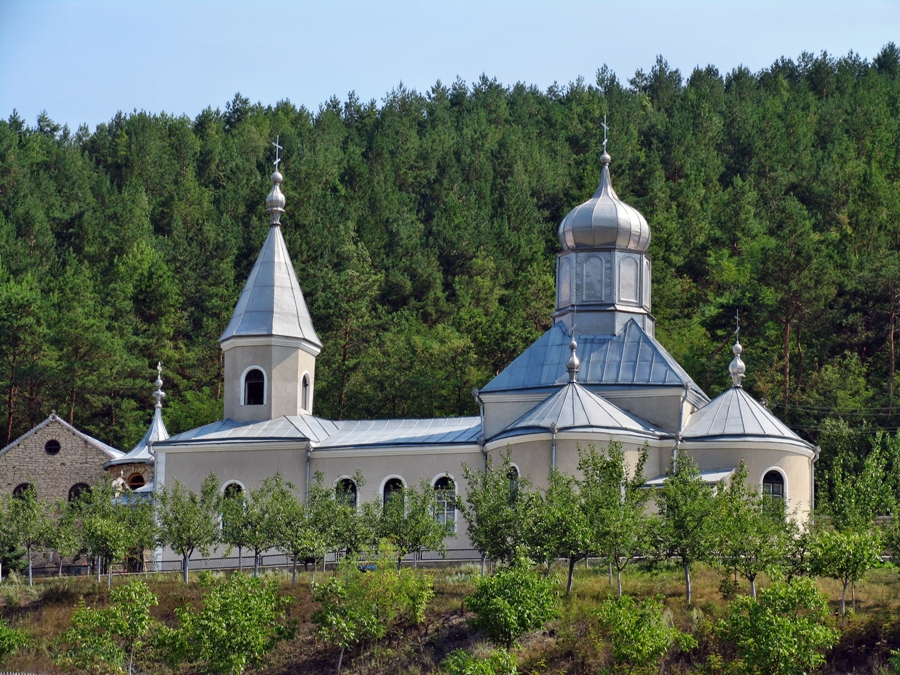
Cosauti Monastery
The first Cosauti Monastery met an untimely end: An earthquake-triggered landslide wiped it out nearly two centuries ago, in the early 1800s. The Moldovan Orthodox Church reopened it in 1994, after the break-up of the Soviet Union. Although the landslide destroyed the monastery’s church, a small chapel with a lovely dome survived. Hidden in the forest surrounding the monastery is the Chalk Monastery, the quarters of a solitary monk known as Pintilie that were carved out of limestone. Near the Cosauti Monastery is the Soroca Fortress, one of Moldova’s best-preserved medieval stone fortifications.
- Distance from Chisinau: 170 km
- Visiting hours: Monday – Sunday, 8 a.m. – 4 p.m.
- Type: Monastery for monks
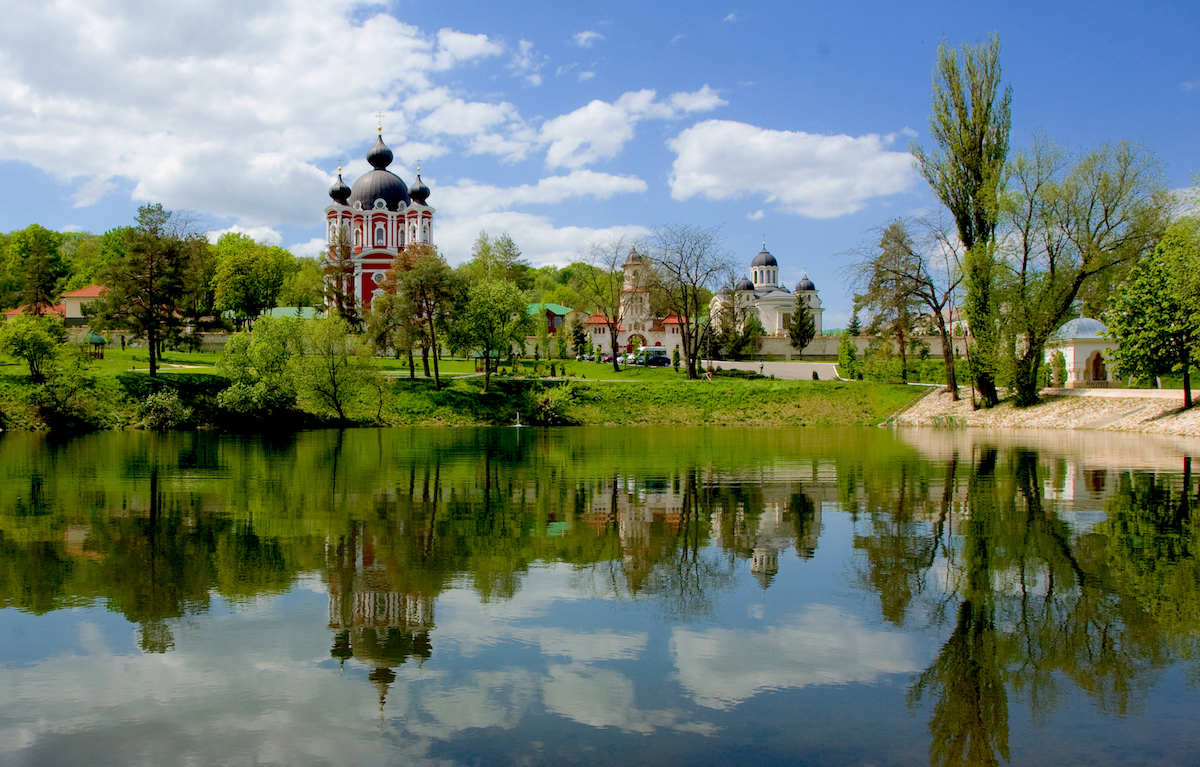
Curchi Monastery
The Curchi Monastery is an architectural gem that includes Moldova’s tallest church spire – 57 meters, or about 190 feet. Considered one of the country’s most beautiful monasteries, the three-century-old complex exudes an aura of peace and quiet. Several churches have been built at the Curchi Monastery over the years. The most impressive is the main house of worship, the Baroque-style Birth of Our Lady Church, inspired by the Church of St. Andrew in Kiev. The Soviets turned the monastery into a psychiatric hospital in 1959. A major fund-raising effort that began in 2005 has returned it to its original glory.
- Distance from Chisinau: 33 km
- Visiting hours: Monday – Sunday, 8 a.m. – 4 p.m.
- Type: Monastery for monks
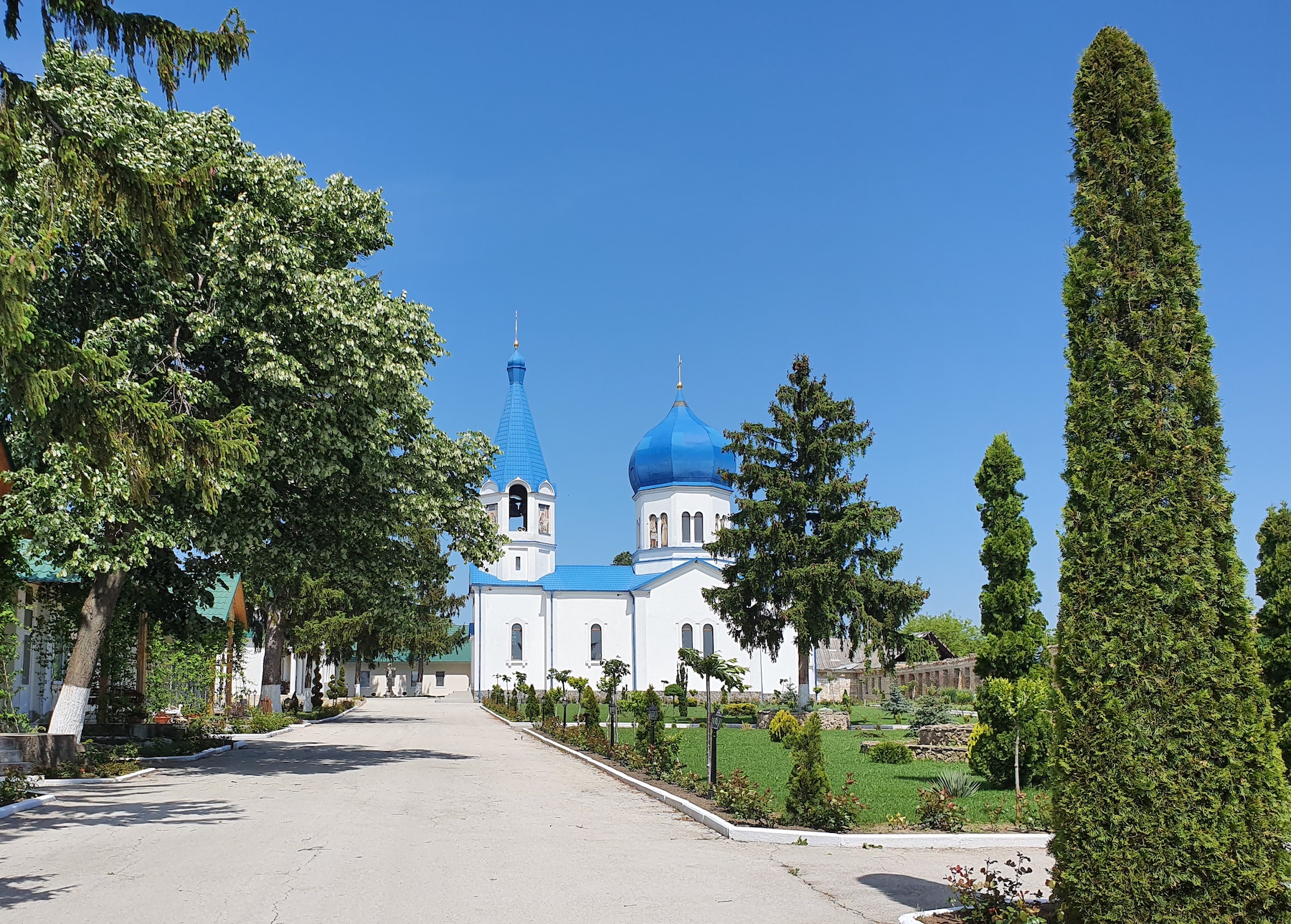
Frumoasa Monastery
The gleaming white and dark blues of the Frumoasa Monastery’s exterior remind some visitors of churches in Greece. The name Frumoasa comes from a spectacular meadow in the middle of the oak forest where the monastery is located. “Frumusica,” the word from which “Frumoasa” is derived, means beautiful. The Soviets converted the monastery from a religious sanctuary to a multi-use social-services complex. They used some buildings as an orphanage, others as a school for the deaf, and still others as a reform school for delinquent girls.
- Distance from Chisinau: 60 km
- Visiting hours: Monday – Sunday, 8 a.m. – 4 p.m.
- Type: Monastery for nuns
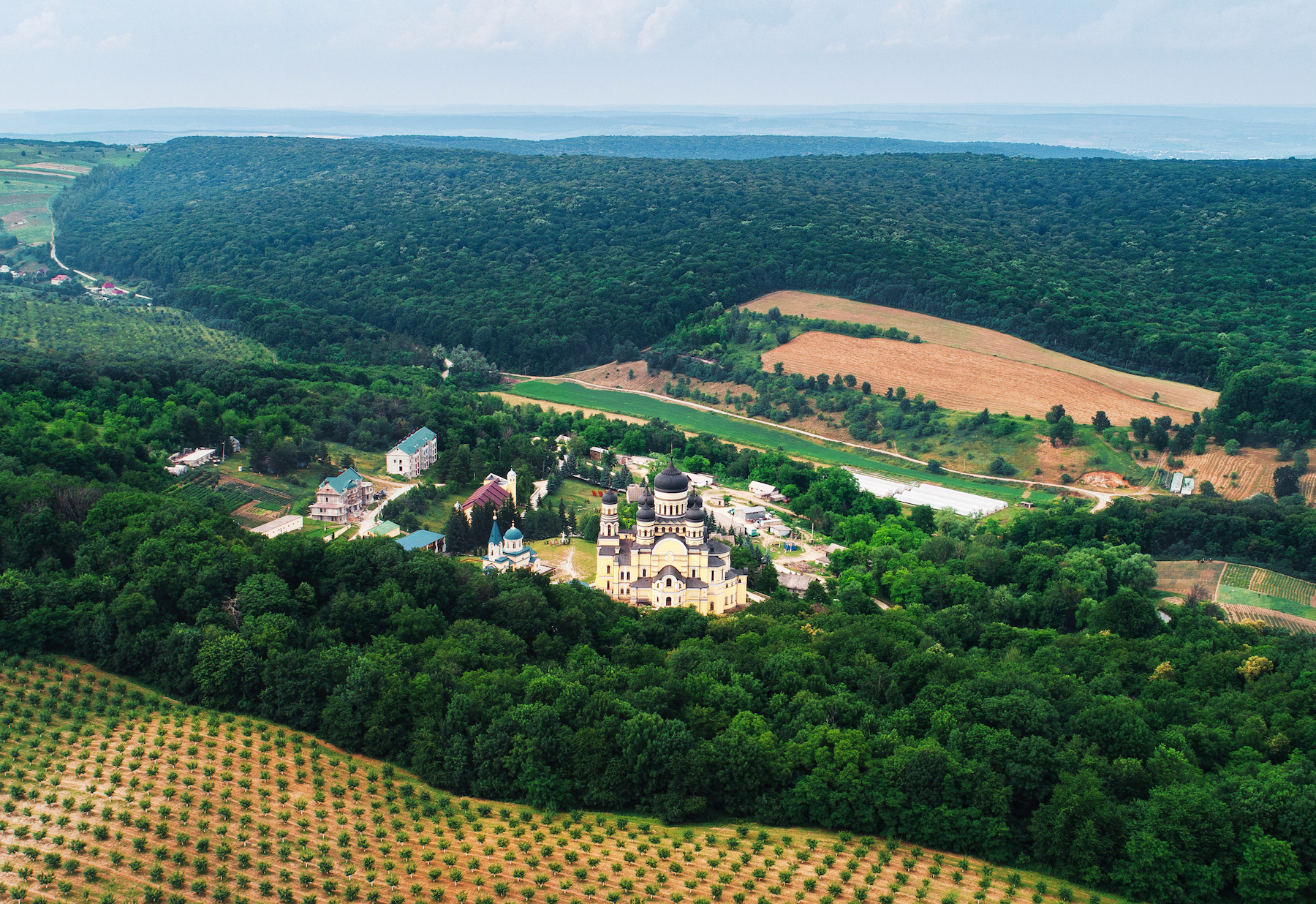
Hancu Monastery
The Hancu Monastery is in a picturesque setting at the base of the Codri Ravine, next to springs where the Cogalnic River originates. A warrior and member of Moldova’s royalty, Mihai Hancu, built the monastery for his daughter, who wanted to become a nun rather than marry one of her father’s military allies. The monastery is a prime example of the Moldovan Architectural Style that flourished between the 14th and 19th Centuries. The complex’s two churches were built in later styles. In addition to the monastery’s lovely setting, visitors like its rich history, which includes tales of invading Tatars burning it to the ground and Russians vanquishing the Tatars, then restoring the structure.
- Distance from Chisinau: 55 km
- Visiting hours: Monday – Sunday, 8 a.m. – 4 p.m.
- Type: Monastery for nuns
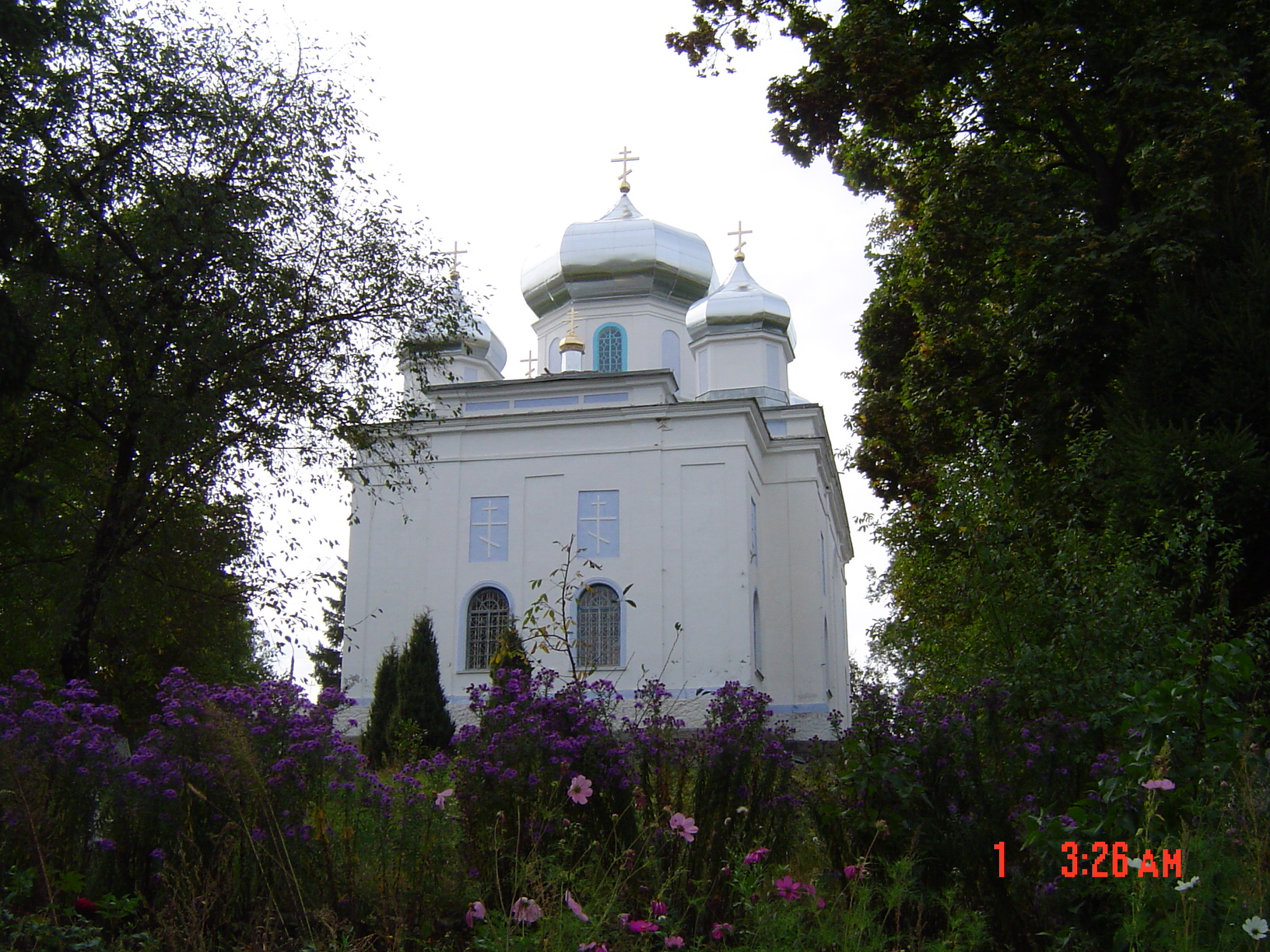
Harbovat Monastery
The Hirbovat Monastery, which dates to the 17th Century, has had to be rebuilt several times from Turkish sacking and Soviet predation. Sadly, a lot of precious relics were lost when the Turks burned the monastery’s structures several tunes. But an important one survived every fire – the Mother of Our Lord painting. It is a venerated icon, with many people saying they were healed of illnesses after praying to it. The Soviets abetted the monastery’s destruction by transforming the complex into a school for disabled children. It was restored after Moldova became independent in the early 1990s. It has since reclaimed its status as one of the country’s most important spiritual centers.
- Distance from Chisinau: 52 km
- Visiting hours: Monday – Sunday, 8 a.m. – 4 p.m.
- Type: Monastery for monks
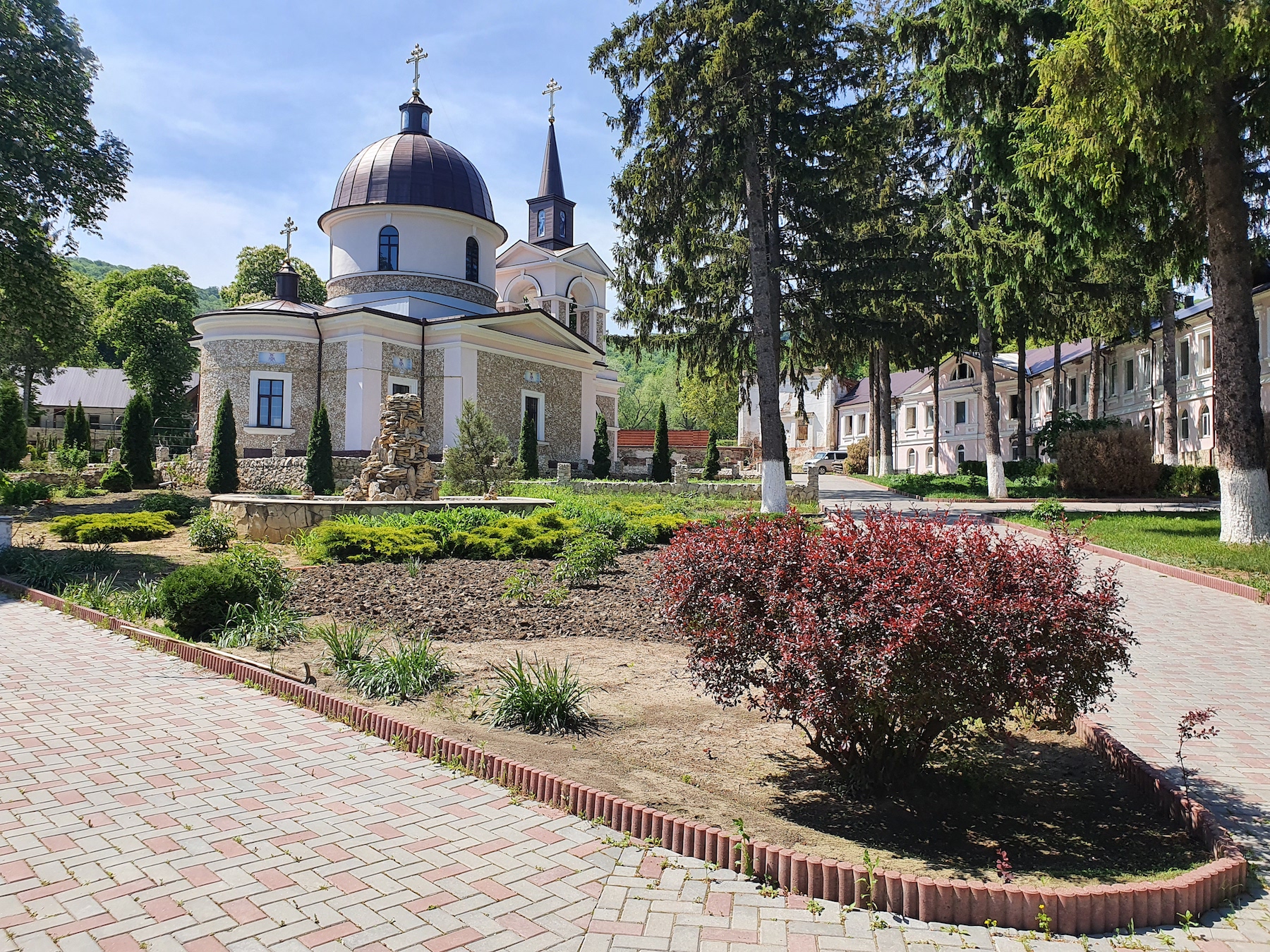
Hirjauca Monastery
Another religious pearl in the heart of Moldova is Hirjauca Monastery, built in 1740. In the beginning it consisted only of monks’ quarters and churches, but by the 19th Century it included an excellent library and school. The monastery was transformed into a spa during Soviet times – a move that reflected communism’s contempt for religion – but it became a religious complex again after the U.S.S.R. collapsed in the early 1990s. The woods surrounding the monastery are a relaxing place to recharge your batteries. Make sure you taste the water from the monastery’s Fantana Tineretii, or Fountain of Youth, which is said to have curative properties.
- Distance from Chisinau: 70 km
- Visiting hours: Monday – Sunday, 8 a.m. – 4 p.m.
- Type: Monastery for monks
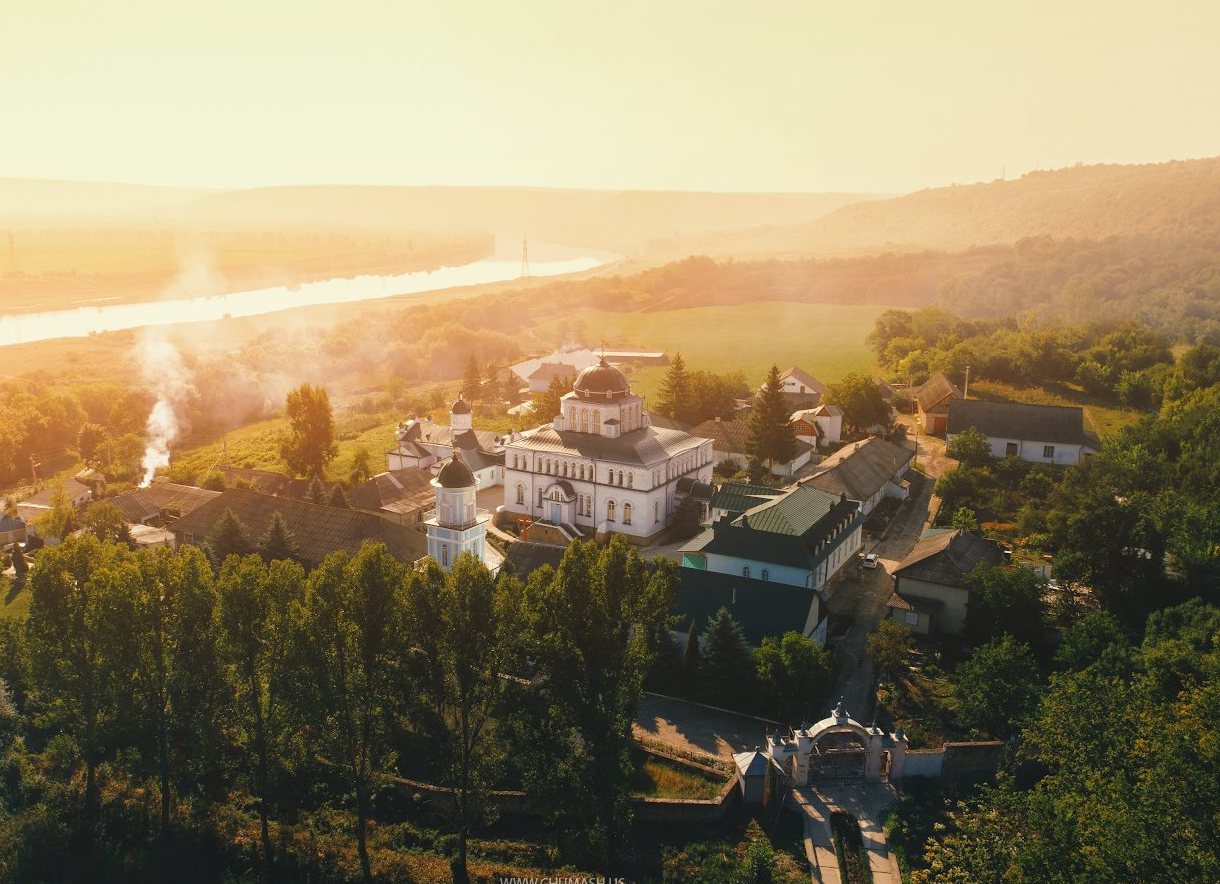
Japca Monastery
The Japca is the only monastery in Moldova that has functioned continuously as a religious sanctuary from its founding, even during Soviet times. Its setting is special because it is near the Hermitage on the Rock, an ancient cave church that offers a marvelous view of the Dniester River. Monks lived in the cave before building the monastery. The Japca Monastery is one of Moldova’s oldest, dating from the 17th Century. Its most impressive piece of architecture is its uniquely designed Church of the Lord’s Ascension.
- Distance from Chisinau: 160 km
- Visiting hours: Monday – Sunday, 8 a.m. – 4 p.m.
- Type: Monastery for nuns
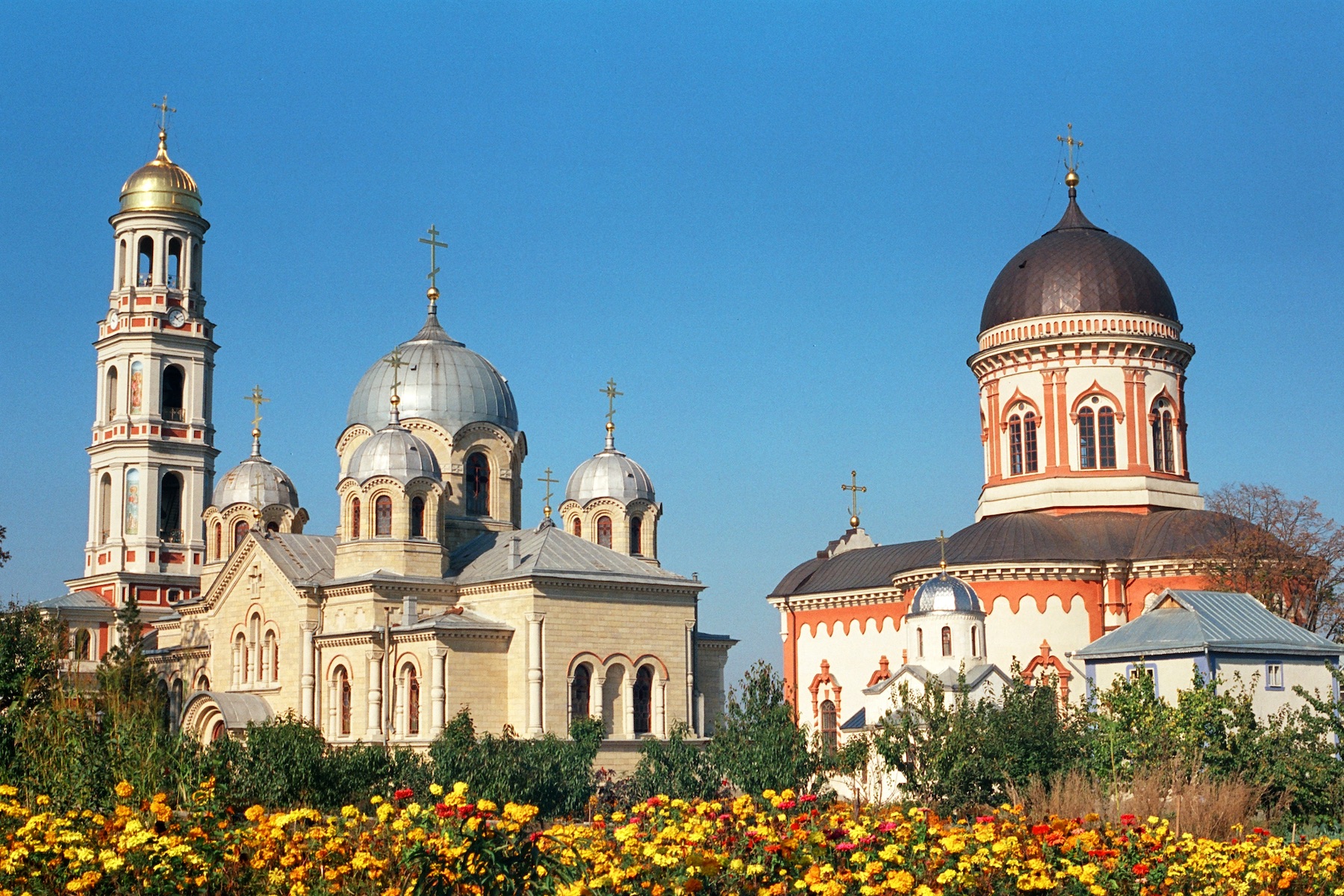
Noul Neamt Monastery
One of the joys of touring the Noul Neamt Monastery is that the monks love sharing their centuries-old crafts-making skills with visitors. The complex is an offshoot of the Neamt Monastery in Romania, so its spiritual traditions are a mixture of Romanian and Slavic. The Noul Neamt includes an array of features that make it more intriguing than most Moldovan monasteries. It boasts four churches, an impressive library and a museum. It also has workshops for creating sculpture and icons – paintings of Jesus and the saints. And it has a carpentry workshop. All are open to guests.
- Disanta de la Chisinau: 77 km
- Visiting hours: Monday – Sunday, 8 a.m. – 4 p.m.
- Type: Monastery for monks
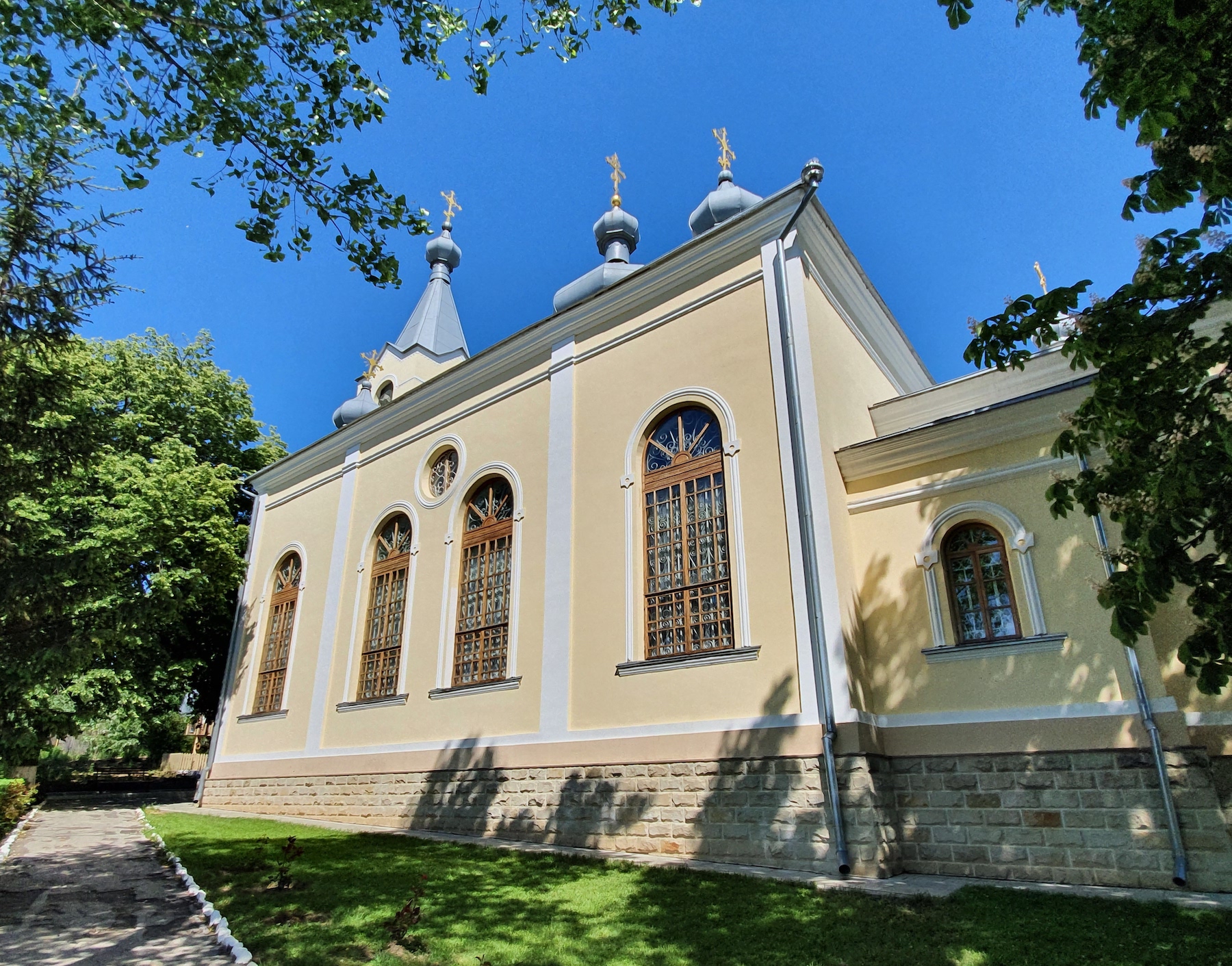
Raciula Monastery
The Raciula Monastery, an hour from Chisinau, offers visitors an experience that few Moldovan religious enclaves do – a chance to live like a nun for a few days. So if you are looking for inner peace in a simple setting, consider staying in the soothing atmosphere of Raciula for awhile.
The monastery’s massive gates are always open. The 70 nuns live in a small cluster of old houses and gardens. The Raciula is one of four Moldovan monasteries built in the shape of a cross. The others are Frumoasa, Hirbovets and Hirjeuca.
- Distance from Chisinau: 45 km
- Visiting hours: Monday – Sunday, 8 a.m. – 4 p.m.
- Type: Monastery for nuns
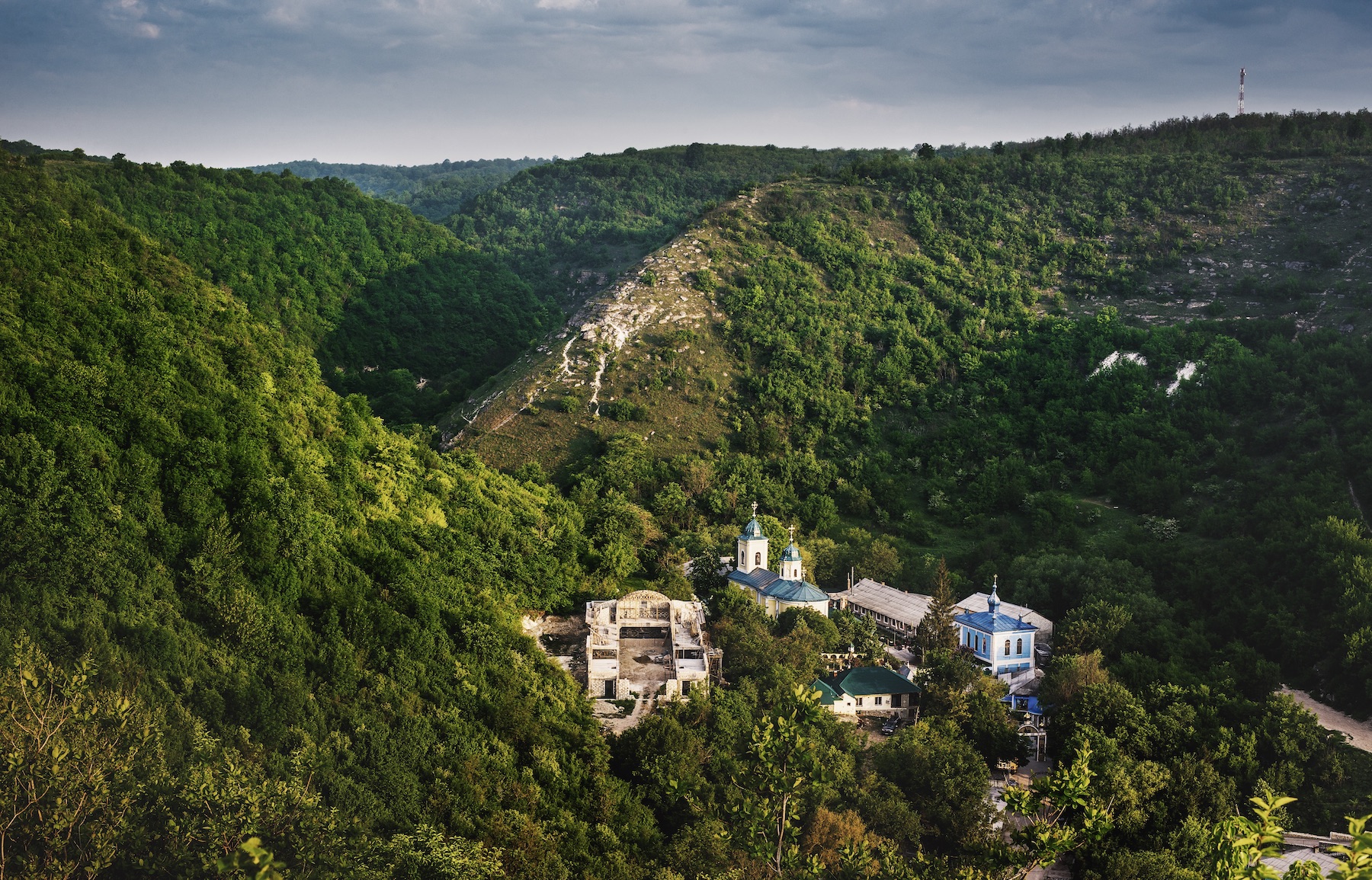
Saharna Monastery
The Saharna Monastery, which sits in a steep, wooded valley, is a magnet for religious pilgrims because of a legend about the Mother Mary. The story goes that centuries ago a monk saw a shining figure of Mary on the top of a cliff overlooking the monastery. When he reached the lookout point, she was gone, but he found a footprint of hers, according to the legend. The area around the monastery contains the Church of the Annuciation, which was carved into a rocky hillside. The annunciation was the Angel Gabriel’s disclosure to Mary that Jesus had returned from the dead. Also near the Saharna Monastery are 30 cascading streams and waterfalls, an Iron Age archaeological site and a Geto-Dacian fortress. The Geto-Dacians were an Eastern European tribe who fought Greek and Roman encroachment.
- Distance from Chisinau: 110 km
- Visiting hours: Monday – Sunday, 6 a.m. – 10 p.m.
- Type: Monastery for monks
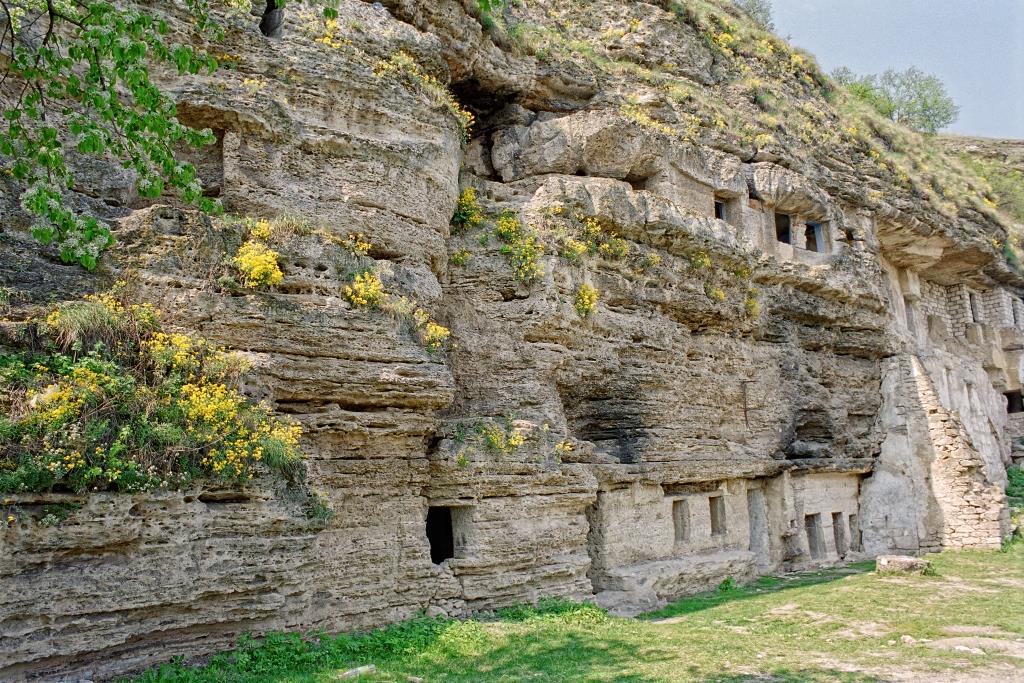
Tipova Monastery
Tipova is Eastern Europe’s largest cave monastery and Moldova’s oldest religious sanctuary. Monks began carving it out of limestone before the medieval state of Moldova was formed. Located at a dizzying height, the complex has been transformed into an open-air museum of amazing beauty. Legend says this is where King Stefan cel Mare met his wife Maria Voichita and where the Greek poet Orpheus spent the last days of his life. Visitors can also explore hundreds of other caves around the monastery.
- Distance from Chisinau: 100 km
- Visiting hours: Monday – Sunday, 8 a.m. – 8 p.m.
- Type: Monastery for monks
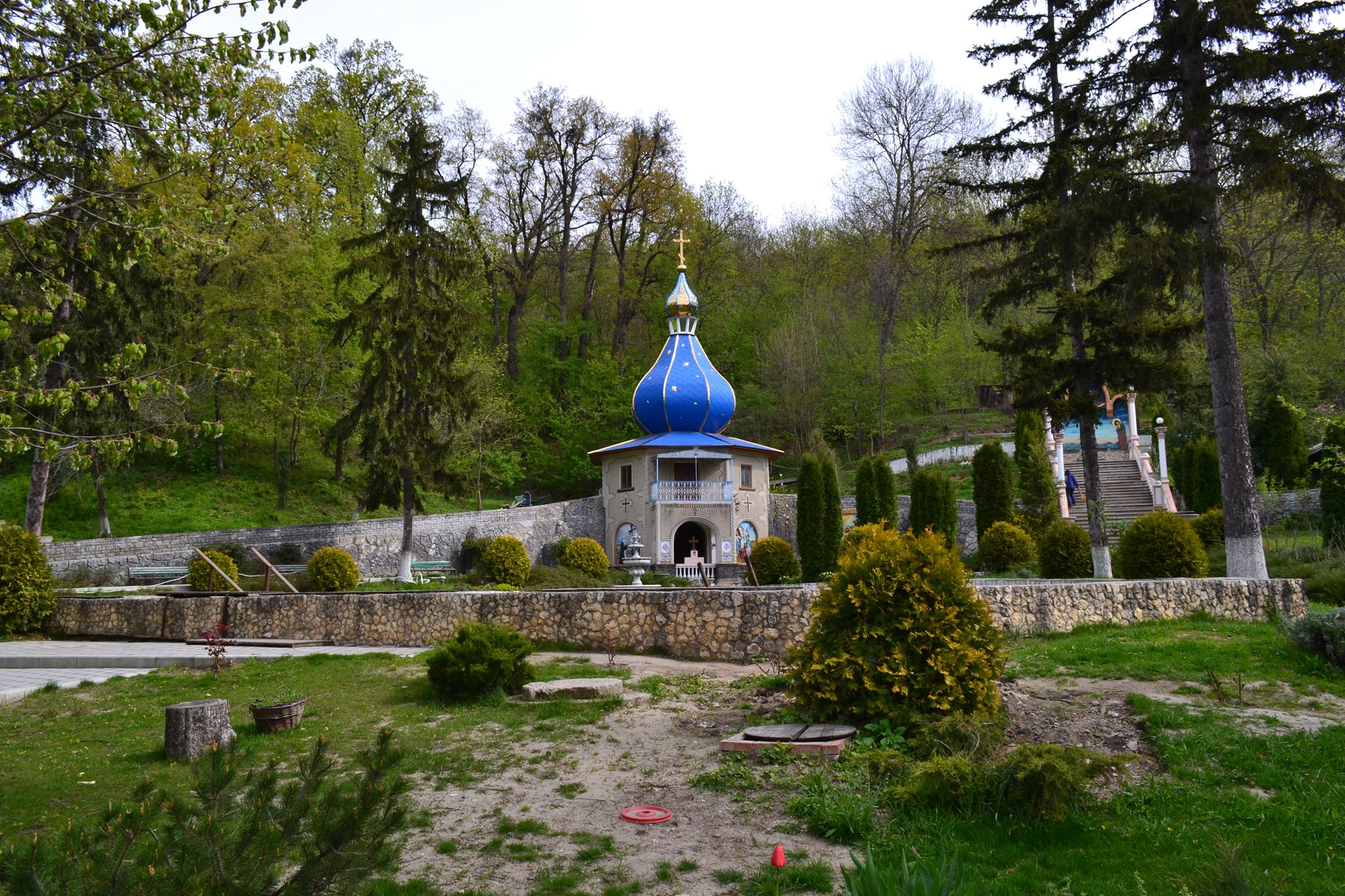
Tiganesti Monastery
The Tiganesti Monastery near Chisinau was built in 1725 by a member of the Moldovan aristocracy, Lupu Dencu, and freed serfs. Tatars and other invaders destroyed it many times over the centuries, but it has risen from the ashes in every instance. A stark reminder of the battles waged on the monastery’s grounds are the graves of hundreds of Romanian, Russian and German soldiers lost in World War II. After the war, in 1945, Red Army soldiers arrived to close the monastery. The chief monk, Ioachim Burlea, was so hospitable, and the monks’ piety so touching, that the soldiers left without closing it. In 1960, Soviet authorities finally forced its closure, burning its books and relics except for a painting of Patelimon, a miraculous healer whom the Romans killed for being Christian. The same year, the Soviets converted the monastery into a psychiatric hospital.
- Distance from Chisinau: 30 km
- Visiting hours: Monday – Sunday, 8 a.m. – 4 p.m.
- Type: Monastery for monks
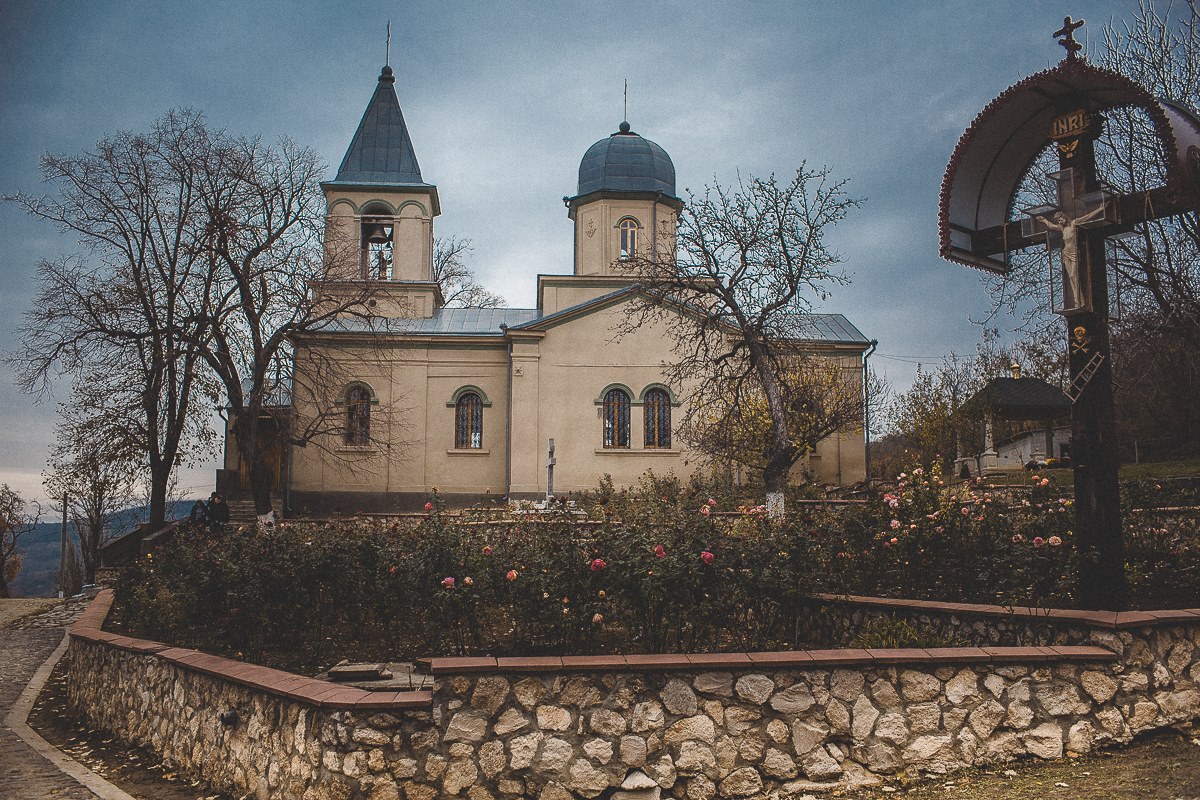
Varzaresti Monastery
The Varzaresti Monastery is steeped in history. It is Moldova’s oldest monastery, and its prayer altar the oldest in the Dniester River Valley, which runs through Moldova and neighboring Ukraine. One of the monastery’s treasures is its icon painting “The Miracles of the Virgin Mary.” Another is a small piece of wood reputed to be from Jesus’s cross. The monastery also contains 19th and 20th Century living quarters for nuns and the remains of several saints. Perched on a hill with a sweeping, idyllic view, the complex looks like a sentinel guarding the area’s tranquility.
- Distance from Chisinau: 70 km
- Visiting hours: Monday – Sunday, 8 a.m. – 8 p.m.
- Type: Monastery for nuns
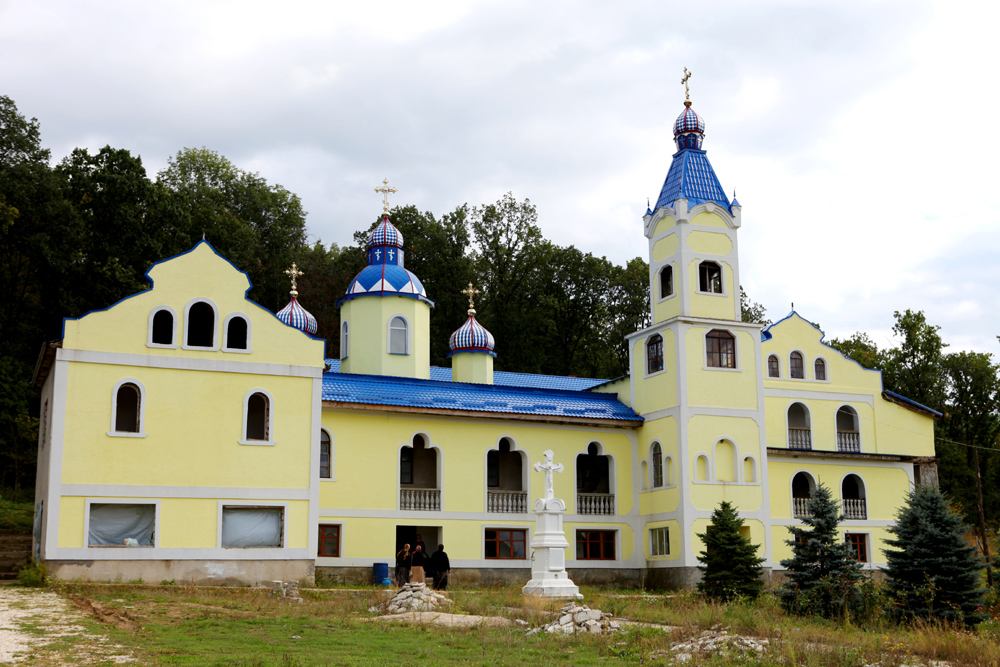
Veverita Monastery
The Veverita Monastery, built in the early 1900s, offers an interesting juxtaposition of architectural styles. The buildings on its left wing are Gothic and on its right wing Russian. The monks’ quarters are one of the largest you’ll see at a Moldovan monastery, and its church one the most stunning of any of the country’s religious sanctuaries.
- Distance from Chisinau: 70 km
- Visiting hours: Monday – Sunday, 8 a.m. – 4 p.m.
- Type: Monastery for monks

Zabriceni Monastery
The Zabriceni Monastery in northern Moldova is one of the few religious sanctuaries where visitors can hear Byzantine church music. It also has a modern side – a store where guests can buy organic food. The sanctuary was modeled after the Mount Athos monastery in Greece, which means that its Greek-rooted music fits. Prayers for monks begin at 4 a.m. and for other Christians at 8 a.m. Byzantine music accompanies the services. The Zabriceni Monastery is so proud of its organic vegetables and fruit that it obtained a European Union Certificate for Organic Agriculture. It sells these products in its BioCamara store.
- Distance from Chisinau: 220km
- Visiting hours: Monday – Sunday, 8 a.m. – 8 p.m.
- Type: Monastery for monks
